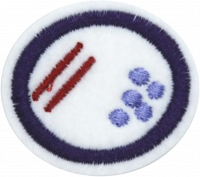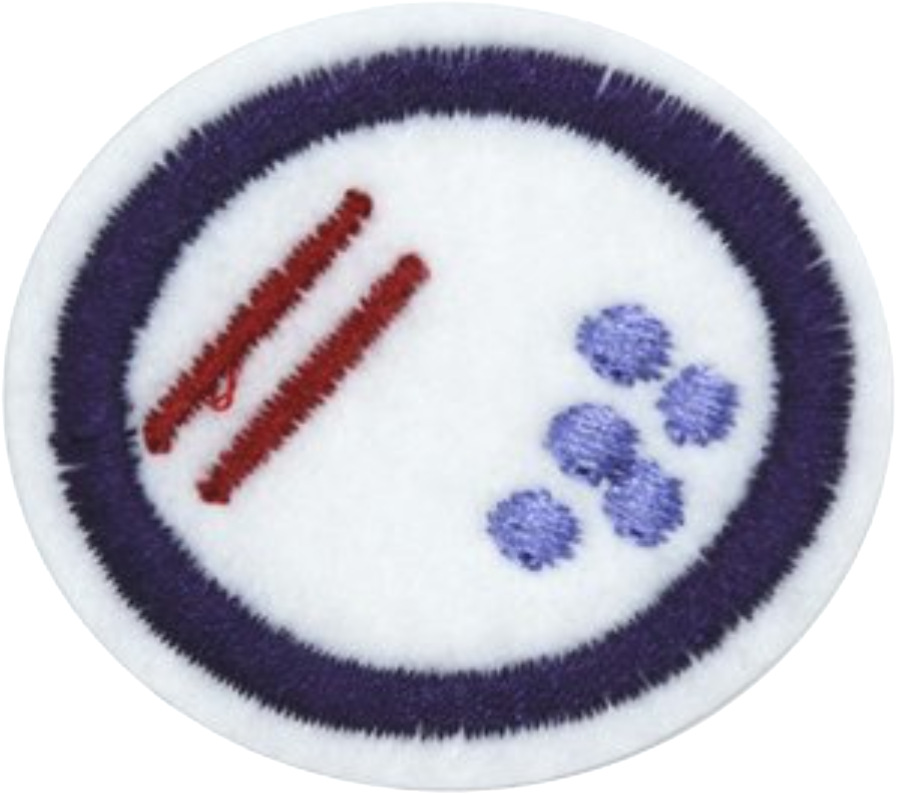|
|
| (2 intermediate revisions by the same user not shown) |
| Line 45: |
Line 45: |
| | {{clear}} | | {{clear}} |
| | | | |
| − | <div lang="en" dir="ltr" class="mw-content-ltr">
| + | {{clear}} |
| − | '''Flagellum''': A hair- or whip-like appendage, used for motility
| |
| − | </div>
| |
| | | | |
| | {{clear}} | | {{clear}} |
| Line 87: |
Line 85: |
| | {{clear}} | | {{clear}} |
| | | | |
| − | <div lang="en" dir="ltr" class="mw-content-ltr">
| + | {{clear}} |
| − | Certain bacteria may reproduce through budding, a process where a small bud forms on a parent bacteria, genetic material is transferred to the bud, and then it separates.
| |
| − | </div>
| |
| | | | |
| − | <div lang="en" dir="ltr" class="mw-content-ltr">
| + | {{clear}} |
| − | [[Image:Budding.jpg|300px]]
| |
| − | </div>
| |
| | | | |
| − | <div lang="en" dir="ltr" class="mw-content-ltr">
| + | {{clear}} |
| − | Some bacteria, including some of the Firmicutes bacteria, create two complete daughter cells inside the parent, then the parent breaks open and dies, releasing the two new bacteria cells.
| |
| − | </div>
| |
| | | | |
| | {{clear}} | | {{clear}} |
| | | | |
| − | <div lang="en" dir="ltr" class="mw-content-ltr">
| + | {{clear}} |
| − | Given that bacterial reproduction is primarily through forms of fission (division), there is no change in genetic material aside from mutation. However, Bacteria do have other ways to transfer genetic material, though not quite analogous to sexual reproduction.
| |
| − | </div>
| |
| | | | |
| | {{clear}} | | {{clear}} |
| | | | |
| − | <div lang="en" dir="ltr" class="mw-content-ltr">
| + | {{clear}} |
| − | [[Image:ConjugationSketch.jpg|300px]]
| |
| − | </div>
| |
| | | | |
| − | <div lang="en" dir="ltr" class="mw-content-ltr">
| + | {{clear}} |
| − | Transduction: A bacteriophage (a virus that uses bacteria as a host) may pick up some pieces of genetic material from a previous host and incidentally transfer it into a new bacterial host.
| |
| − | </div>
| |
| | | | |
| − | <div lang="en" dir="ltr" class="mw-content-ltr">
| + | {{clear}} |
| − | [[Image:Transduction.jpg|300px]]
| |
| − | </div>
| |
| | | | |
| − | <div lang="en" dir="ltr" class="mw-content-ltr">
| + | {{clear}} |
| − | Transformation: Bacteria may pick up fragments of genetic material from their environment, usually left by dead bacteria.
| |
| − | </div>
| |
| | | | |
| − | <div lang="en" dir="ltr" class="mw-content-ltr">
| + | {{clear}} |
| − | [[Image:TransformationBacteria.jpg|300px]]
| |
| − | </div>
| |
| | | | |
| | <noinclude></noinclude> | | <noinclude></noinclude> |
| Line 135: |
Line 115: |
| | {{clear}} | | {{clear}} |
| | | | |
| − | <div lang="en" dir="ltr" class="mw-content-ltr">
| + | {{clear}} |
| − | Categories of Autotrophs:
| |
| − | </div>
| |
| | | | |
| | {{clear}} | | {{clear}} |
| Line 202: |
Line 180: |
| | {{clear}} | | {{clear}} |
| | | | |
| − | <div lang="en" dir="ltr" class="mw-content-ltr">
| + | {{clear}} |
| − | '''Typhoid Fever''' (''Salmonella typhi'') - Transferred through contaminated water.
| |
| − | </div>
| |
| | | | |
| − | <div lang="en" dir="ltr" class="mw-content-ltr">
| + | {{clear}} |
| − | Prevention: Vaccination. Also, for the unvaccinated, in areas where Typhoid may be present, it is best not to consume fresh fruits and vegetables that have been washed with untreated water, and best not to drink water that isn’t bottled (also be wary of ice, as it is usually made from local water).
| |
| − | </div>
| |
| | | | |
| − | <div lang="en" dir="ltr" class="mw-content-ltr">
| + | {{clear}} |
| − | '''Cholera''' (''Vibrio cholera'') - Transferred through water contaminated with bodily fluids.
| |
| − | </div>
| |
| | | | |
| − | <div lang="en" dir="ltr" class="mw-content-ltr">
| + | {{clear}} |
| − | Prevention: In areas where cholera may be prevalent, wash hands thoroughly, avoid fresh fruit or vegetables unless you can peel them yourself, only eat cooked food, do not drink the local water.
| |
| − | </div>
| |
| | | | |
| − | <div lang="en" dir="ltr" class="mw-content-ltr">
| + | {{clear}} |
| − | '''Tetanus''' (''Clostridium tetani'') - Transferred through contamination into wounds.
| |
| − | </div>
| |
| | | | |
| − | <div lang="en" dir="ltr" class="mw-content-ltr">
| + | {{clear}} |
| − | Prevention: Vaccination (note that tetanus vaccinations need updated relatively frequently compared to many other types of vaccinations) Also, be careful around rusty and dirty objects that can cause puncture wounds or cuts. Wash wounds thoroughly and apply a surface antiseptic. Leave deeper wounds open to drain (seek medical attention as appropriate).
| |
| − | </div>
| |
| | | | |
| − | <div lang="en" dir="ltr" class="mw-content-ltr">
| + | {{clear}} |
| − | '''Tuberculosis''' (''Mycobacterium tuberculosis'') - Transferred through droplets in coughs and sneezes.
| |
| − | </div>
| |
| | | | |
| − | <div lang="en" dir="ltr" class="mw-content-ltr">
| + | {{clear}} |
| − | Prevention: Use caution in areas where tuberculosis is common. Wear face masks, wash hands, do not touch hands to face or mouth, try to avoid enclosed spaces with those that may be infected, work in open, well ventilated areas.
| |
| − | </div>
| |
| | | | |
| − | <div lang="en" dir="ltr" class="mw-content-ltr">
| + | {{clear}} |
| − | '''Lyme Disease''' (''Borrelia burgdorferi'') - Transferred through the bite of certain ticks.
| |
| − | </div>
| |
| | | | |
| − | <div lang="en" dir="ltr" class="mw-content-ltr">
| + | {{clear}} |
| − | Prevention: Avoid or use caution in areas that may be infested with ticks (tall grasses, thick undergrowth, etc). Wear long pants and long sleeves, tuck pant legs into boots or socks, use insect repellents with DEET, check frequently for ticks, remove ticks carefully, apply surface antiseptic.
| |
| − | </div>
| |
| | | | |
| | <noinclude></noinclude> | | <noinclude></noinclude> |
| Line 254: |
Line 212: |
| | <noinclude></noinclude> | | <noinclude></noinclude> |
| | ==Referencias== | | ==Referencias== |
| − | [[Category:Adventist Youth Honors Answer Book/es]]
| |
| | <noinclude></noinclude> | | <noinclude></noinclude> |
| | {{CloseHonorPage}} | | {{CloseHonorPage}} |



